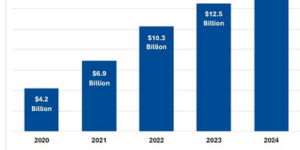Prices rose, but threatened coverage changes haven’t materialized during a delayed 1/1 reinsurance renewal period, according to reinsurance broker Guy Carpenter.
Referring to Jan. 1, 2023 as “one of the most challenging reinsurance markets the sector has experienced,” Guy Carpenter’s Dec. 30, 2022 announcement said that even though the season was “extremely late,” most placements were ultimately done without many of the reinsurers’ requested modifications in coverage.
According to Guy Carpenter, “many non-concurrent coverage issues have been resolved.”
The report added, however, that “there is still work to complete; this is not yet a settled market.”
In the most challenged sector—property—Guy Carpenter said that market adjustments focused on three distinct areas: pricing, attachment and coverage. “Ultimately, coverage changes that presented the most extreme erosion of value were not widely taken up, Guy Carpenter reported, stating that marketwide adjustments were limited to terror and strike, riot and civil commotion (SRCC) clauses.
Commenting on price and structure, however, the report said that changes in those two areas, in some cases, were “unsupported by technical considerations.”
“While conditions warrant a market correction, not all outcomes were logical or sustainable,” Guy Carpenter said, noting that average price adjustments and increased attachment point movements were substantial, without putting actual values on how much either price or attachment points jumped.
“Looking past the renewal of January 2023, it’s important to remember that we have been at crossroads before.”
Dean Klisura, Guy Carpenter
Dean Klisura, president and CEO, Guy Carpenter, noted that difficult renewal periods in the past heralded the entrance of new capital. “Looking past the renewal of January 2023, it’s important to remember that we have been at crossroads before,” he said, highlighting prior capital-drawing periods in the wake of significant catastrophe loss events such as Hurricane Andrew, the attacks of September 11, 2001, and Hurricanes Katrina, Rita and Wilma—all catalysts for market corrections that preceded new capital entering the sector.
At this point, Guy Carpenter has projected that the 2022 annual large loss total rose to $112 billion, encompassing Hurricane Ian, European flood and hail events, Australian floods and U.S. severe storms, but not yet estimating the impact of the most recent December events.
“It is imperative that the industry stay focused on providing workable client solutions, thorough coverage and balanced pricing for the long-term sustainability of cedents and markets. Our top priority is ensuring that clients are getting the coverage and clarity they require in order to conduct their business,” he said in a media statement.
In a separate report, Stonybrook Capital has put a $115 billion price tag on global insured natural catastrophe losses occurring during the first nine months of 2022 and commented that the New York-headquartered investment banking and reinsurance broking firm expects reinsurers to “remain in the driver seat” with a “hard market continuing well into 2023.”
The Stonybrook Capital report does give some sense of the magnitude of price changes, noting that “reinsurers are generally getting 35 percent or greater risk-adjusted rate increases, and anecdotally up to 150 percent.”
Unlike Guy Carpenter, Stonybrook Capital also reports coverage restrictions, suggesting that reinsurers are “often restricting cover to ‘named perils.'”
“The harsh renewals for primary insurers is driven by an even more restricted retro market. With a harder retro market, reinsurers are hesitant to authorize lines, not knowing the capacity available to cede their own risks,” said the Stonybrook Capital report. “Other factors include years of consistent losses in the U.S., surplus declines, a weaker euro, a recent trend by reinsurers to de-risk their assumed portfolios, and a surprising absence of new entrants,” the Dec. 29, 2022 report continued.
Guy Carpenter suggests that new entrants are coming, distinguishing between activity in the fall and what started to happen in December—and between new capital providers witnessing a market inflection point as “an opportunity to increase their participation” and existing players that pulled back property capacity in 2022.
“There was limited new capital inflow through the fall as investors held back amid continued catastrophe loss, increasing risk-free rates, their own moderating AUM and a desire to assess the market transition at January 1. However, capital did start to move more freely into the sector in December as the degree of market correction became clearer,” Guy Carpenter reported.
Outside of the property reinsurance market, Guy Carpenter reported that casualty treaty results were highly dependent on prior-year results of primary insurers, underlying rate changes and overall portfolio performance, adding that there was pressure on pricing seen across most lines.
“Overall, once market-clearing pricing was determined, capacity was stable across most casualty lines with very little change in terms/conditions.”
Offering other observations about the property market, Guy Carpenter said:
- An expected inflation-driven increase in demand did not materialize from reinsurance buyers, who reassessed the cost/benefit of additional limit purchases.
- In 2022, 42 different catastrophe bonds were brought to the 144A market for more than $9 billion in limit placed, taking the total outstanding notional amount to an all-time high of $34 billion.
According to Guy Carpenter, most cat bonds priced at or above the higher end of the price guidance and attracted less total limit, and cat bond investors pushed back on complex books, secondary perils and more involved structures.





















 A Shifting Political Landscape—and More State Regulations for Cyber
A Shifting Political Landscape—and More State Regulations for Cyber  Roof Repair and Replacement Costs Up Nearly 30% Since 2022: Verisk
Roof Repair and Replacement Costs Up Nearly 30% Since 2022: Verisk  Wildfire Losses Increasing But Still Small Compared to Hurricanes: KCC
Wildfire Losses Increasing But Still Small Compared to Hurricanes: KCC  Don’t Forget Workers Comp Tariff Impacts: Berkley
Don’t Forget Workers Comp Tariff Impacts: Berkley 








